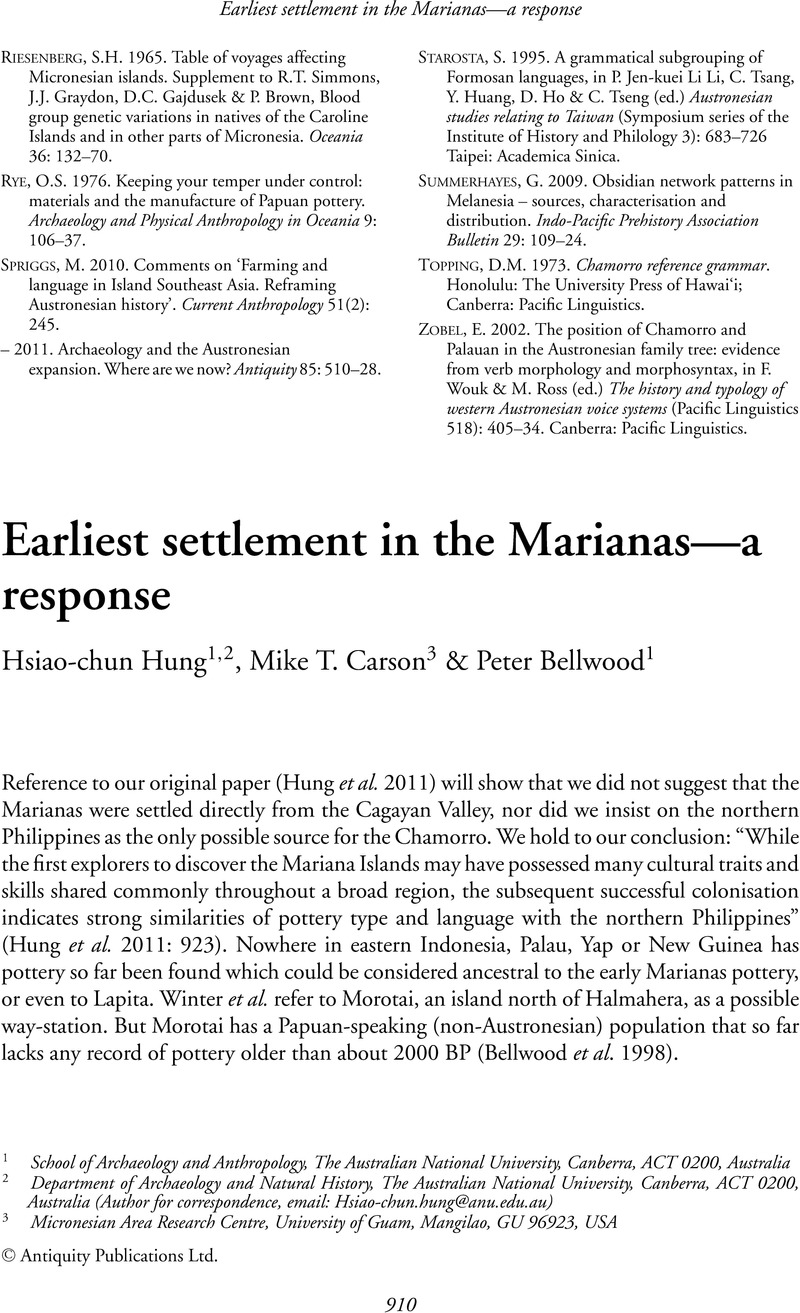Crossref Citations
This article has been cited by the following publications. This list is generated based on data provided by Crossref.
Specht, Jim
Denham, Tim
Goff, James
and
Terrell, John Edward
2014.
Deconstructing the Lapita Cultural Complex in the Bismarck Archipelago.
Journal of Archaeological Research,
Vol. 22,
Issue. 2,
p.
89.
Summerhayes, Glenn R.
2017.
Handbook of East and Southeast Asian Archaeology.
p.
659.
Briggs, Robert J.
2017.
There’s no place (Like Home): Craig Santos Perez’s poetry as military strategy.
Green Letters,
Vol. 21,
Issue. 1,
p.
48.
Pugach, Irina
Hübner, Alexander
Hung, Hsiao-chun
Meyer, Matthias
Carson, Mike T.
and
Stoneking, Mark
2021.
Ancient DNA from Guam and the peopling of the Pacific.
Proceedings of the National Academy of Sciences,
Vol. 118,
Issue. 1,
Stoneking, Mark
2025.
Encyclopedia of Quaternary Science.
p.
742.



